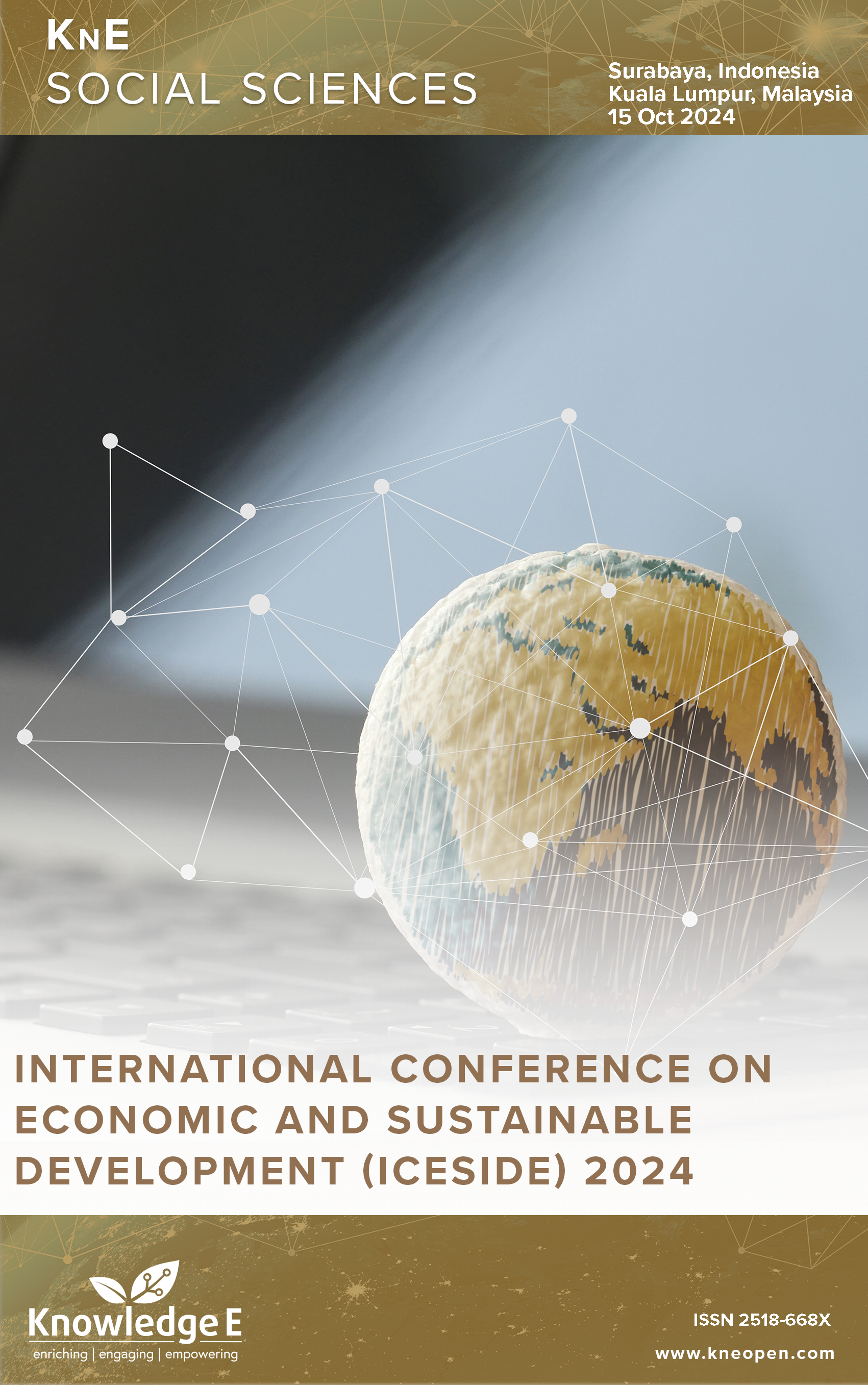Strategy for Strengthening Creative Economic Subsectors: Case Study on Culinary MSMEs Blue Beach Tanjung Bumi Bangkalan District and Lon Malang Beach Sampang District
DOI:
https://doi.org/10.18502/kss.v10i5.18095Keywords:
creative economy culinary subsector, multiple regression, technologyAbstract
The creative economy in Bangkalan and Sampang Regencies continues to be developed. This research aims to formulate a strategy for developing the creative economy of the culinary subsector in the Tanjung Bumi Blue Beach tourist spot, Bangkalan Regency, and Lon Beach, Malang, Sampang Regency, because they act as economic drivers in Bangkalan and Sampang Regency. The method used in this research is multiple regression, with as many micro and small enterprises as possible, with as many as 152 samples. The estimation results show that capital, labor, raw materials for production, and electrical energy have a significant effect on production sold by traders. Still, the use of technology has not had a significant effect on production sold by traders. The Research results found that culinary MSMEs in the Blue Beach and Lon Malang tourist destination have not yet optimized digitalization. For example, they lack mastery of technology and have not used e-payment, so they have not been able to increase revenue.
References
Cooke P. The dark side of KIBS agency, the creative economy, and regional sustainability. J Open Innov. 2024 Mar;10(1):100177. DOI: https://doi.org/10.1016/j.joitmc.2023.100177
Fahmi FZ, Krismiyaningsih E, Sagala SA, Rustiadi S. Creative industries and disaster resilience: A focus on arts- and culture-based industries in Indonesia. Int J Disaster Risk Reduct. 2023 Dec;99:104136. DOI: https://doi.org/10.1016/j.ijdrr.2023.104136
Verma S, Shome S, Hassan MK. FinTech in small and medium enterprises (SMEs): A review and future research agenda. Eur Manage J. 2023 Dec;41(6):950–71. DOI: https://doi.org/10.1016/j.emj.2023.07.003
Kurz HD. Innovations and profits: schumpeter and the classical heritage. J Econ Behav Organ. 2008 Jul;67(1):263–78. DOI: https://doi.org/10.1016/j.jebo.2007.08.003
Jaidi N, Siswantoyo, Liu J, Sholikhah Z, Andhini MM. Siswantoyo, Liu J, Sholikhah Z, Andhini MM. Ambidexterity Behavior of Creative SMEs for Disruptive Flows of Innovation: A Comparative Study of Indonesia and Taiwan. J Open Innov. 2022 Sep;8(3):141. DOI: https://doi.org/10.3390/joitmc8030141
Lim DH, Na WJ, Hong WH, Bae YH. Development of a fire prediction model at the urban planning stage: ordinary least squares regression analysis of the area of urban land use and fire damage data in South Korea. Fire Saf J. 2023 Apr;136:103761. DOI: https://doi.org/10.1016/j.firesaf.2023.103761
Chatterji S, Lobato IN. On divergent dynamics with ordinary least squares learning. J Econ Behav Organ. 2015 Jan;109:1–9. DOI: https://doi.org/10.1016/j.jebo.2014.10.003
Lin B, Benjamin IN. Causal relationships between energy consumption, foreign direct investment and economic growth for MINT: evidence from panel dynamic ordinary least square models. J Clean Prod. 2018 Oct;197:708–20. DOI: https://doi.org/10.1016/j.jclepro.2018.06.152
Bilginol K, Denli HH, Şeker DZ. Ordinary Least Squares Regression Method Approach for Site Selection of Automated Teller Machines (ATMs). Procedia Environ Sci. 2015 Jan;26:66–9. DOI: https://doi.org/10.1016/j.proenv.2015.05.026
Utami ID, Santosa I, Vidya Leila MR. Priority resilience strategy for micro, small, and medium enterprises for dealing with natural disasters. Int J Disaster Risk Reduct. 2021 Mar;55:102074. DOI: https://doi.org/10.1016/j.ijdrr.2021.102074
Takeda A, Truong HT, Sonobe T. The impacts of the COVID-19 pandemic on micro, small, and medium enterprises in Asia and their digitalization responses. J Asian Econ. 2022 Oct;82:101533. DOI: https://doi.org/10.1016/j.asieco.2022.101533
Arifin B, Wicaksono E, Tenrini RH, Wardhana IW, Setiawan H, Damayanty SA, et al. Village fund, village-owned-enterprises, and employment: evidence from Indonesia. J Rural Stud. 2020 Oct;79:382–94. DOI: https://doi.org/10.1016/j.jrurstud.2020.08.052
Ridwan Maksum I, Yayuk Sri Rahayu A, Kusumawardhani D. A Social Enterprise Approach to Empowering Micro, Small and Medium Enterprises (SMEs) in Indonesia. J Open Innov. 2020 Sep;6(3):50. DOI: https://doi.org/10.3390/joitmc6030050
Abdullah T, Lee C, Carr N. Defining success and failure in the hospitality industry’s microenterprises: A study of Indonesian street food vendors. Int J Hospit Manag. 2023 Feb;109:103403. DOI: https://doi.org/10.1016/j.ijhm.2022.103403
Setyowati N, Masyhuri, Mulyo JH, Irham, Yudhistira B. Masyhuri, Mulyo JH, Irham, Yudhistira B. The hidden treasure of wedang uwuh, an ethnic traditional drink from Java, Indonesia: its benefits and innovations. Int J Gastron Food Sci. 2023 Mar;31:100688. DOI: https://doi.org/10.1016/j.ijgfs.2023.100688

